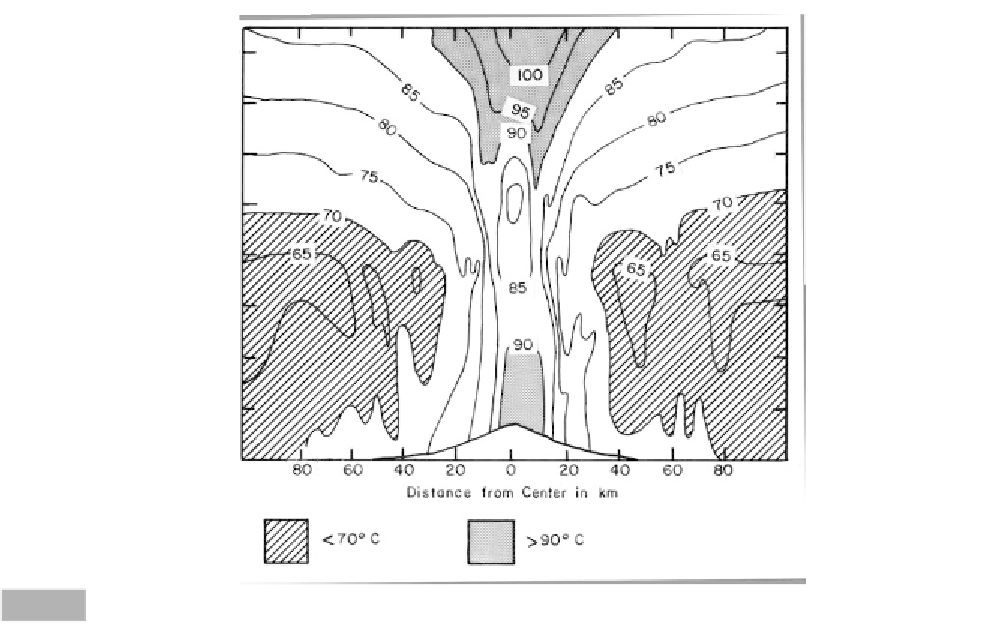Geoscience Reference
In-Depth Information
At least eight conditions are required to develop a
tropical cyclone. First, efficient convective instability is
required causing near-vertical uplift of air throughout
the troposphere. Cyclonic depressions begin to
develop when ocean temperatures exceed 26-27°C
because the lower atmosphere becomes uniformly
unstable at these values. With further temperature
increases, the magnitude of a tropical cyclone intensi-
fies. Tropical cyclones tend not to form above 30°C
because smaller-scale turbulence begins to dominate
with the breakdown of near-vertical air movement.
Once developed, cyclones rapidly decay below tem-
peratures of 24°C. Cyclones rarely develop poleward
of 20° latitude because ocean temperatures seldom
reach these latter crucial values. These relationships
have implications for global warming. While the area of
ocean favorable for cyclone formation may increase,
there is an upper temperature limit constraining
growth. Tropical cyclones can also dramatically cool
sea surface temperature by 3-4°C because of the
enormous amount of heat involved in evaporating
ocean water. Hurricane Gilbert cooled the ocean from
31°C to 26°C off the coast of Mexico in 1988.
Second, there must be convergence of surface air
into areas of warm water. The formation of numerous
thunderstorms over warm waters provides this mecha-
nism. Convergence causes upward movement of air and
creates instability in the upper atmosphere. However,
in the case of tropical cyclones, this instability is
enhanced by the release of latent heat of evaporation.
Because of warm ocean temperatures and intense solar
heating, evaporation at the sea surface is optimum.
Each kilogram of water evaporated at 26°C requires
2425 kilojoules of heat energy. As air rises, it cools, and
if water vapor condenses, then this energy is released as
latent heat of evaporation. Vast amounts of heat energy
are thus transferred to the upper atmosphere causing
convective instability that forces air upwards. Figure 3.4
illustrates the type of temperature structure that can
develop in a tropical cyclone because of this process.
The temperatures shown schematically represent the
maximum possible temperature, in degrees Celsius, if
all evaporated moisture were condensed. The release of
latent heat of condensation in the zone of uplift can
raise air temperatures up to 20°C above those at equiv-
alent levels. Convective instability will persist as long as
this heating remains over a warm ocean.
Third, a trigger mechanism is required to begin
rotation of surface air converging into the uplift zone.
This rotation most likely occurs in an
easterly wave
200
100
90
400
65
600
85
90
800
1000
80
60
40
20
0
20
40
60
80
Distance from center of eye (km)
<70˚C
>90˚C
Potential temperature structure due to latent heat of evaporation in Hurricane Inez, 28 September 1966 (adapted from Hawkins & Imbembo, 1976).
Fig. 3.4





































